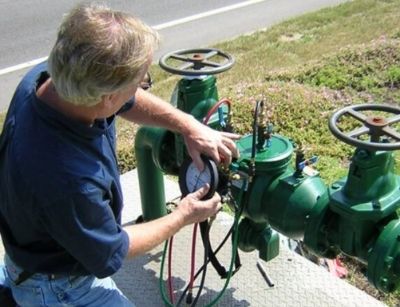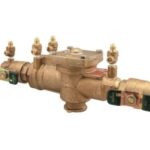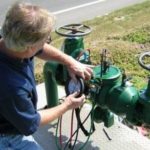
Everything You Need To Know About Backflow
Of all the things that can go wrong with a plumbing system, backflow is one of the scariest and most dangerous. And yet, it’s also one of the least well-known among the general population. Part of the reason for this is that it’s (fortunately) not as common of an issue as, say, a clogged drain or leaky faucet. This is because systems have been put in place to prevent backflow from occurring in the first place. But if these systems fail, the consequences can be dire and far-reaching.
So for any property owner, it pays to understand the basics of backflow, the impact it can have on a single property or an entire community, and how to prevent it.
Backflow Explained
Simply put, backflow is when the flow of water in a supply system reverses directions - or more specifically, when non-potable water flows backward and re-joins the potable water supply. Backflow can occur wherever there’s a cross-connection between the potable water supply system and a system that may come in contact with non-potable water.
There are two types of backflow - back-siphonage and back-pressure. Back-siphonage occurs when a loss of pressure in the water main causes non-potable water to be sucked down into the system (such as through a garden hose nozzle that’s submerged in a bucket of soapy water). Back-pressure occurs when the pressure in a cross-connected system exceeds the pressure in the potable water system, forcing non-potable water down into the potable water supply.
In the late 1970s, residents of one Connecticut town had propane coming out of their taps after workers at a nearby gas storage facility attempted to flush a pressurized tank with water (a textbook example of back-pressure). This is just one example, but it illustrates just how dangerous a backflow contamination event can be.
What Is Backflow Testing - And Why Does It Matter?
Today, all cross-connections between potable and non-potable water systems are required to have backflow prevention devices. There are several types of backflow preventers, and the type used depends on the type of system and the specific backflow risks it presents. But no matter the design, these devices need to be inspected and tested for proper function - a process called backflow testing.
Backflow testing ensures that every component in a backflow preventer is working correctly and hasn’t been compromised or impaired by wear and tear. The city or county will typically send a letter to the property owner every year when it’s time for backflow testing and certification. Once the test is complete and the device has been certified, the technician will send a form to the city or county to complete the certification process.
Who Can Perform Backflow Testing and Certification?
The only people who should perform backflow testing and certification are those trained and certified to do so. For one thing, the local water authority won’t accept backflow certification paperwork from anyone who doesn’t hold a valid Backflow Tester Certification approved by the state or local authority.
Furthermore, only a plumber who’s backflow prevention certified will correctly perform the test and perform any necessary repairs according to the latest codes and standards in their area. So when the time for backflow testing comes around again, property owners should always hire a reputable company with the right credentials for the job.
About Pride Plumbing
Pride Plumbing has been a trusted industry leader since 1965. They offer 24/7 emergency service, up-front pricing, and a highly rewarding membership program. Their friendly and punctual technicians are certified backflow testers, so don’t hesitate to call Pride for backflow testing and certification in Mt. Gilead, NC, today!
Distribution Links +
- rfdtv.com
- panhandle.newschannelnebraska.com
- lifestyle.967thewolf.net
- lifestyle.xtra1063.com
- lifestyle.953hlf.com
- lifestyle.koltcountry.com
- htv10.tv
- metro.newschannelnebraska.com
- lifestyle.1045thedan.com
- midplains.newschannelnebraska.com
- ktvn.com
- wboc.com
- snntv.com
- central.newschannelnebraska.com
- southeast.newschannelnebraska.com
- northeast.newschannelnebraska.com
- plattevalley.newschannelnebraska.com
- rivercountry.newschannelnebraska.com
- wrde.com
- wpgxfox28.com
- lifestyle.mykmlk.com
- wtnzfox43.com
- lifestyle.3wzfm.com
- lifestyle.bigtalkerradio.com
- lifestyle.rewindmymusic.com
- lifestyle.southernsportstoday.com
- lifestyle.thepodcastpark.com
- lifestyle.680thefan.com
- lifestyle.rewind1019.com
- lifestyle.us983.com
- lifestyle.countrylegends1059.com
- lifestyle.967wshv.com






